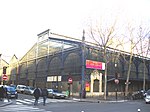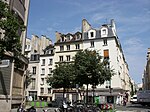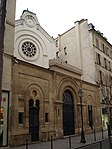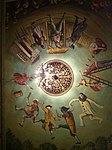3rd arrondissement of Paris

The 3rd arrondissement of Paris (IIIe arrondissement) is one of the 20 arrondissements (districts) of the capital city of France. In spoken French, this arrondissement is colloquially referred to as the "troisième" meaning "third" in French. Its postal code is 75003. It is governed locally together with the 1st, 2nd and 4th arrondissement, with which it forms the 1st sector of Paris. The arrondissement, called Temple and situated on the right bank of the River Seine, is the smallest in area after the 2nd arrondissement. The arrondissement contains the northern, quieter part of the medieval district of Le Marais (while the 4th arrondissement contains Le Marais' more lively southern part, notably including the gay district of Paris).
Excerpt from the Wikipedia article 3rd arrondissement of Paris (License: CC BY-SA 3.0, Authors, Images).3rd arrondissement of Paris
Rue Eugène Spuller, Paris 3rd Arrondissement (Paris)
Geographical coordinates (GPS) Address Website Nearby Places Show on map
Geographical coordinates (GPS)
| Latitude | Longitude |
|---|---|
| N 48.863819444444 ° | E 2.3616583333333 ° |
Address
Mairie de Paris Centre (Mairie du IIIème;Mairie du 3ème)
Rue Eugène Spuller 2
75003 Paris, 3rd Arrondissement (Paris)
Ile-de-France, France
Open on Google Maps








